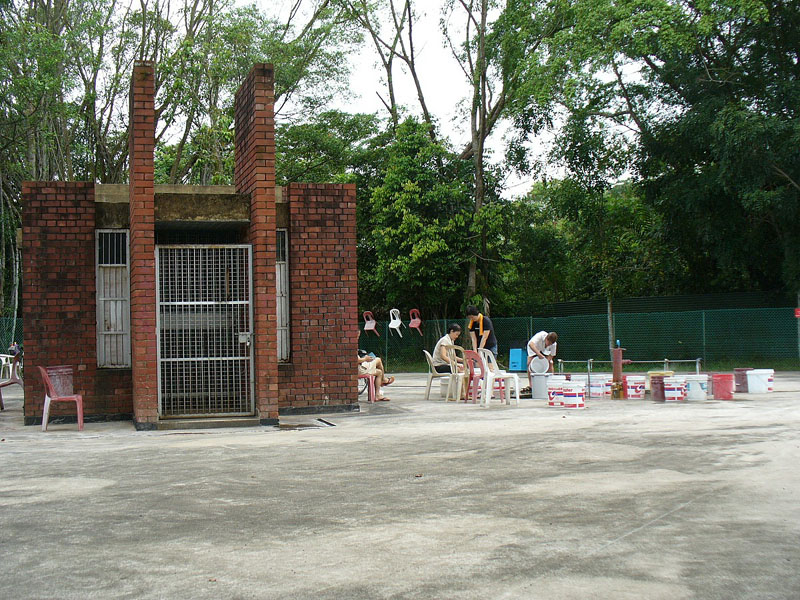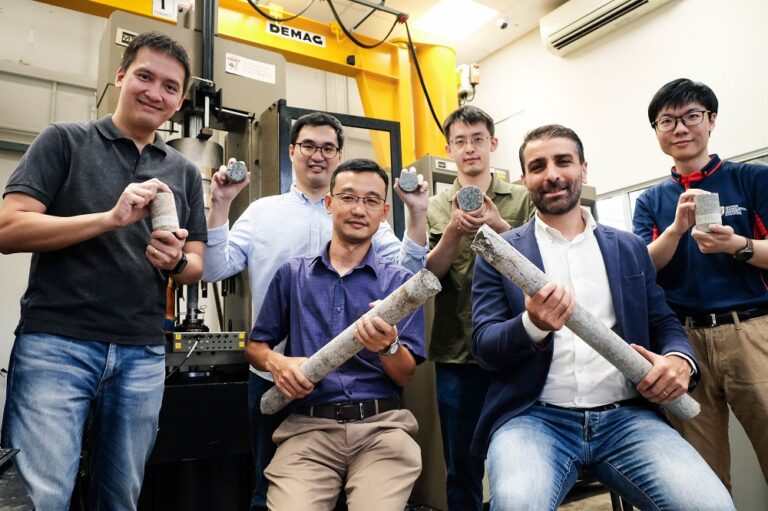
We had previously reported on the proposal for this study back in 2021. The results of the exploratory studies now indicate that temperatures of 60 to 90 degrees Celsius at a depth of 1.1 kilometers. NTU’s Associate Professor Alessandro Romagnoli, co-lead of the study, further said that the team estimates the temperature to go as high as 200 degrees Celsius at 4 to 5 kilometers.
Results of research drilling
Since 2021, the research team had been drilling to a depth of 1.1 kilometers at Admiralty Lane. Aside from measuring subsurface temperatures at the slim hole well, rock samples had been collected. The study site and the Sembawang hot spring is within the Simpang Granite Pluton geological unit, which is is known to have high heat production, thus creating a higher temperature gradient.

(From bottom right, clockwise) NTU Assoc Prof Alessandro Romagnoli, Assoc Prof Wu Wei, Senior Research Fellow Dr Hendrik Tjiawi, Research Fellow Dr Jonathan Poh, Research Fellow Dr Yang Lizhong, and Research Associate Mr Lu Dazhao, holding granite core samples extracted from various depths from Admiralty Lane. (source: NTU )
Prof Romagnoli also pointed out that the estimated subsurface temperatures in Sembawang is already hotter than rock temperatures at similar depths in several non-volcanic regions in Europe and South Korea.
Given these results, the potential geothermal resource near Sembawang can be used for a range of applications – from water desalination to district cooling, or even generation of electricity or hydrogen. According to Dr Tobias Massier of TUMCREATE, about every GW of geothermal power can cover 12% of Singapore’s cooling demand.
However, Prof Romagnoli also remarked on how drilling deeper is more expensive and introduces additional technical challenges. “Exploratory drilling of up to 1km–2km deep can be conducted with relatively small equipment and small diameter holes. However, the cost of doing so is only a fraction of drilling the much larger holes needed for production purposes, at around 4km-5km, where heat is actually extracted from deep underground.”
Further exploration needed
The preliminary results of this study provide the basis for further geothermal exploration, and will inform decisions on where to locate geothermal power stations should the country proceed with these plans.
In mid-2022, Singapore’s Energy Market Authority (EMA) issued an RFI to facilitate an assessment of the geothermal energy potential of the country. This is in preparation of a plan to do a detailed geophysical investigation of the whole of Singapore.
“The findings from NTU’s study are a useful basis for us to better understand the potential for geothermal energy to become a key renewable resource for Singapore,” commented EMA Deputy Chief Executive of Energy Planning and Development Ralph Foong.